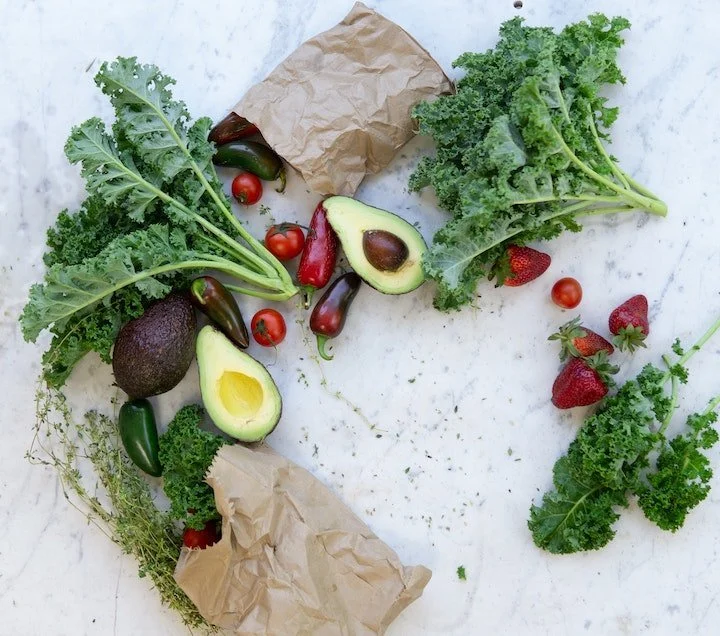Protecting Skin from Sun Damage Naturally with Essential Oils, Plant Extracts and Diet
The sun causes - wait for it - sun damage to the skin. Knowing what sun damage is will assist you in protecting the skin as well as potentially reversing the damage that has already occurred. Once you know the what it is you must know the what to do for protection from UVR (ultra violet radiation) sun damage. Free radical oxidation and inflammation are predominantly what it is, and making use of essential oil and botanical anti-inflammatories and antioxidants is what to do. I’ll assume a bit more detail would be helpful.
The reaction to UV energy absorbed by skin cells
There are three spectrums in the UV range, UVA, UVB, and UVC, with potential to cause malignancies and photoaging, most damage coming from UVB. Exposure damages epidermal DNA through many mechanisms. UVR induced inflammation and release of damaging Reactive Oxygen Species (ROS), better known as free radicals, are the main cause of damage to cellular function and DNA disruption. Other damaging factors caused by UVR are gene mutation and immunosuppression in the skin.
This excerpt from a 2005 Gary Halliday study shows the damaging impact to the skin of free radicals and inflammation; “UVA makes a larger impact on oxidative stress in the skin than UVB by inducing reactive oxygen and nitrogen species which damage DNA, protein and lipids and which also lead to NAD+ depletion, and therefore energy loss from the cell. Lipid peroxidation induces prostaglandin production that in association with UV-induced nitric oxide production causes inflammation. Inflammation drives benign human solar keratosis (SK) to undergo malignant conversion into squamous cell carcinoma (SCC) probably because the inflammatory cells produce reactive oxygen species, thus increasing oxidative damage to DNA and the immune system.” (Gary M. Halliday, 2005)
The potential for sun damage is enhanced by certain medications, especially antibiotics having phototoxicity. These include Ciprofloxacin, Doxycycline, Levofloxacin, Ofloxacin, Tetracycline, Trimethoprim, where sun exposure should be avoided while taking these and even up to weeks following treatment. Some topical creams may include phototoxic compounds. The coumarins and furocoumarins, especially found in bergamot essential oil, have known photosensitizing properties and, when reacting with UV exposure in the skin, may cause slight to severe sun burning and hyperpigmentation. It’s best to leave bergamot, lemon, lime and angelica out of topical application.
Anti-inflammatory and antioxidant skin protection
The solution becomes obvious when understanding its inflammation and free radicals that are the main cause of carcinogenesis, hyperpigmentation and sunburn. Preventing free radicals is first and most important in protection from cellular sun damage. Free radicals are a direct cause of inflammation, gene mutation and photoimmunosuppression. That makes antioxidant free radical scavengers your most aggressive support when exposed to the sun.
Antioxidants should be applied topically daily as a part of holistic healthy skin care regimen. A daily dose will provide protection even during casual sun exposure. Antioxidant skin care is essential due to so many causes of oxidative stress to the skin.
Inflammation, just like free radicals, is damaging at the cellular and DNA levels. Similar to antioxidants, anti-inflammatory action is a protective requirement for healthy regeneration of skin cells.
Effective plant based sun protection
Botanicals offer a vast amount of options for both antioxidant and anti-inflammatory protection from sun damage. When using plant based extracts for any human health condition, it’s helpful to look at why the plant is producing and using these extracts for its own health and protection. Evidence shows DNA-damaging ultraviolet (UV) light induces the accumulation of UV light-absorbing flavonoids and other phenolics in dermal tissue of the plant body. Yes, the compounds are produced in the plant as a sun protective measure.
There are several plant extracts studied and known to reduce and prevent damage due to UV exposure. Several essential oils, the volatile components of a distilled plant extract, have potent antioxidant and anti-inflammatory potential in preventing sun damage to skin. Frankincense, sandalwood, clove, and copaiba are just some of the essential oils that could be included in a protective topical skin care formula.
The oils we like to call carrier used to dilute and create great lotions and serums with are loaded with documented antioxidant protection from sun damage. The list is long and includes coconut oil, sunflower seed oil, almond oil and baobab oil.
There are other extract methods that provide the necessary and powerful flavonoids, carotenoids and phenolics known for the antioxidant and anti-inflammatory structure. Supercritical carbon dioxide (CO2) and tincture extracts are most useful in skin care. A ginger CO2 extract has the potent ginger compounds not found in the essential oil. CO2 extracts of frankincense, turmeric and rosemary may have increased antioxidant and anti-inflammatory action over the essential oil extracts. Green tea tincture, an alcohol or glycerin extract, contains the important antioxidant polyphenols. Resveratrol, a polyphenol stilbene extract from grape skin or Japanese knot weed, is an incredible skin rejuvenating compound that also shows protection from UV oxidative damage.
Astaxanthin, sea buckthorn and other useful red, sort-of-orange, or yellow things
Color is a clue to an extracts antioxidant and anti-inflammatory potential. Often, the deeper the color, red, orange, yellow or purple-brown, the more probable for protection from UV damage. Carotenoids are a very rich source of this protective feature. Astaxanthin, a CO2 extract from the red algae (Haematococcus pluvialis), is a sun-blocking, free radical scavenging antioxidant and anti-inflammatory with ample amounts of evidence showing its efficacy. Astaxanthin is bright red-orange colored carotenoid, also found in salmon, pink flamingos and shrimp. Carotenoids are a well known class of antioxidants, most popular being beta-carotene, which is contained in the pressed carrot seed oil. Sea buckthorn CO2, another brightly red-orange extract, has high amounts of the carotenoid zeathanthin. Turmeric CO2 extract, with its yellow-orangey curcumin content, is another flavonoid well known for powerful anti-inflammatory action, just watch for the staining effect if using it. The densely yellow color of calendula (marigold) CO2 extract is due to the complex of carotenoid compounds. Yes, those colors mean strong skin protective antioxidants and anti-inflammatories.
Eat your sun protection
A diet rich in the mentioned polyphenols, flavonoids, Vitamin E, and carotenoids is the standard for a healthy body, healthy mind and a solution to preventing sun damage to the skin. To get the most from your protective topical skin care, it’s necessary to provide support internally. So while this diet is providing the nutrition, antioxidants and anti-inflammatory compounds needed for overall health, it is also providing protection from sun damage.
Studies using 16 mg lycopene showed the potent skin protection from UVR when taken internally as a dietary supplement. Well, actually it wasn’t really a supplement. The study participants ate tomato paste (between 24 to 55 grams depending on which study you look at). The results showed heightened prevention of erythema, that would be sunburn, after 10 weeks of daily intake. These studies demonstrate the effectiveness of dietary intake of antioxidants in preventing sun damage.
The study also showed something I found somewhat mysterious when I first started working with topical botanical sun care. There was a period of time before the topical solutions were completely effective, generally between 6 to 8 weeks. The compounds require some accumulation, a saturation of sorts, in order to be effective. The tomato paste study gave a better account of this with the best suggestion to use a topical formula for 10 weeks before expecting full results.
Another suggestion based on the logic of this study is to combine dietary with topical food based antioxidants to be most effective. Sea buckthorn CO2 extract is a great topical anti-inflammatory and anti-oxidant. There are studies that show sea buckthorn to work similar to the tomato paste (lycopene) when taken dietarily.
Put it together and put it on your skin - daily
Here’s the overview; eat the rainbow diet and supplement with antioxidants and anti-inflammatory extracts, while simultaneously using extracts topically with the same compounds used dietarily. Use this link for recipes and more “how-to” information.
A sun protective lifestyle
We already know smoking is bad in so many ways. Exposure to smoke can exacerbate the damage caused by UVR. There are other environmental airborne compounds that may have a similar enhancement with UV exposure, including fumes from combustable engines and charbroiled meats. Developing an awareness of environmental hazards and avoiding these are part of a healthy lifestyle that will also protect from sun damage.
Along with wearing sun protection creams or lotions, wearing sun filtering clothing when in areas of heavy sun exposure is recommended. As already mentioned, a protective dietary lifestyle should include lots of antioxidant and anti-inflammatory foods and supplements.
Meditation and a positive mind set are also important and effective in reducing inflammation in the body, thus reducing damage. Stress and negativity may cause excess free radicals in the system, and along with stress related inflammation, would enhance the photoaging and carcinogenesis of UV exposure.



